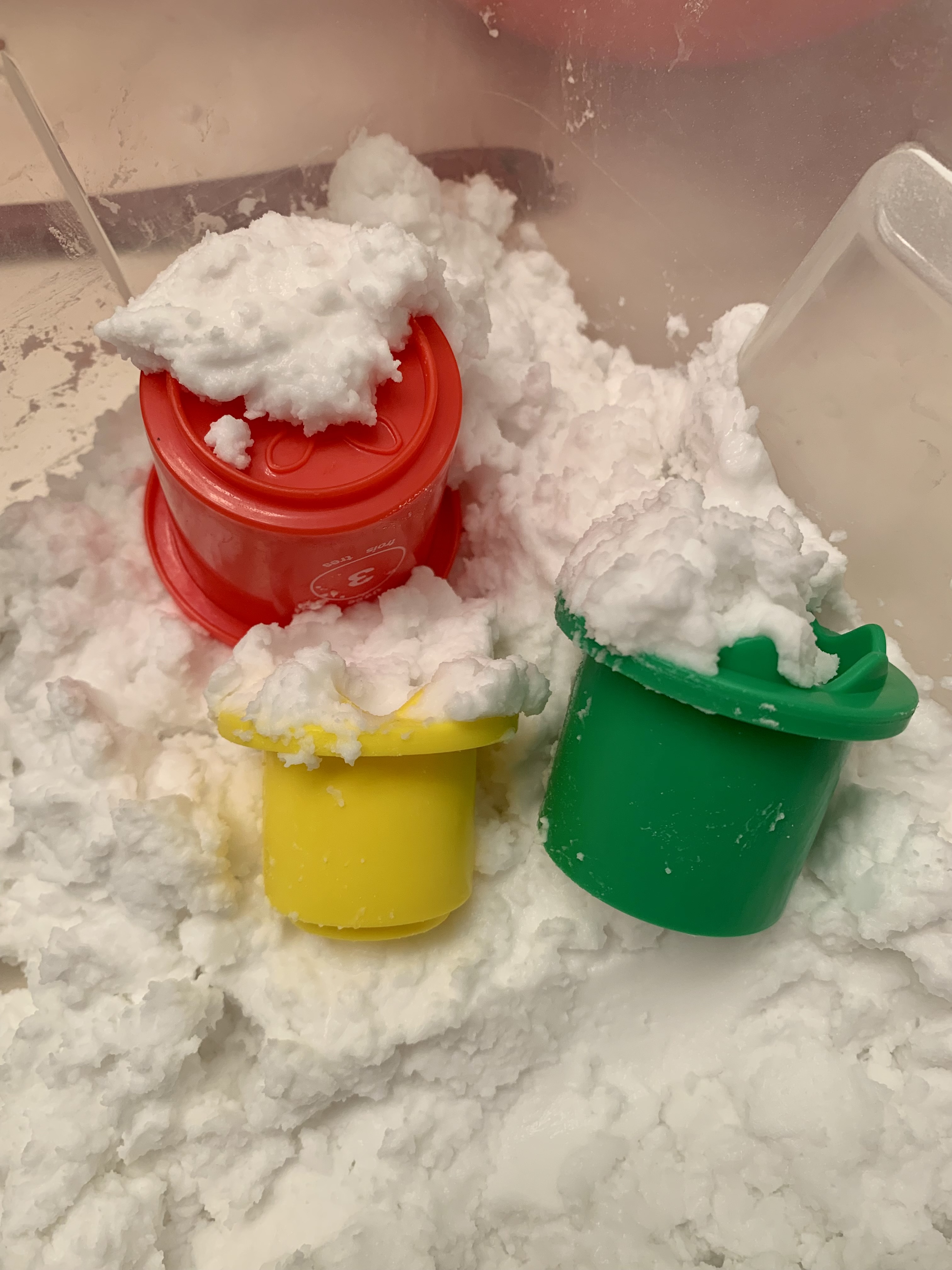
It’s a tradition in our family on our children’s first birthdays to set them in the bathtub in their diaper with paint and a canvas and let them create their own first piece of artwork. A parent is present (or the whole family to watch!), and we use nontoxic paint. But yes, there is a huge, fun mess! Usually, the artwork is created with their fingers or whole hand, but it’s not ever a surprise for some toes and feet to get in on the action too! Children are made to be messy—and not only learn but thrive when they are encouraged to explore and make a mess! When we think of a child’s getting messy, we usually just of the mess itself. What if we shift our mindset to look at mess-making as children’s having a creative space to explore their surroundings using their senses? We explore most things with our hands and eyes, but what happens when we encourage our children to explore something with all their senses instead? Their whole view of something might quickly shift, opening the possibility to new ideas. What a fun way to learn! When parents start thinking of this new way of playing, we often struggle with where to start. Do we toss them outside into a muddy puddle or do we guide them a bit more? The answer of course depends on your children and how they like to learn. Some children will gladly run into a muddy puddle. Other children might need to be told it’s okay to get in.

A great place to start getting messy is in the kitchen. Food and liquids offer almost unlimited options for exploration. You can see, touch, taste, and smell the items—and some you can even hear! Adults know what a bag of frozen peas feels like. When children help cook, we usually give them the task of pouring the frozen peas from the bag into the pot. But what if, instead of telling them to pour in the peas right away, we give them time and space to explore the peas? Encourage your child to stick a whole hand into the frozen bag or pour the peas over those little palms. What does it sound like when we drop the frozen peas on the counter or the floor? What does it feel like when we add water to the pot and the frozen peas? Watch your child pour liquid over the peas to see them defrost. Try to encourage putting one—or even a handful—into a curious mouth. How does your tot react? Excited? Shocked? It’s probably a new batch of sensations that are super fun!

Now that you have the idea, take it and apply it anywhere and everywhere you can! You will quickly find your child becoming a little explorer who is also becoming more independent and inquisitive. Kids quickly learn the process of cause and effect and how to sort out steps of doing things in different orders. Of course, you’ll set limits so that messy play doesn’t involve your child’s pouring the whole gallon of milk onto the table and then onto the floor. A few ounces of the creamy beverage and a giant bowl will do nicely. Playing messy naturally results in a mess, and that, in turn, provides a great opportunity to learn about cleaning up after ourselves. So play with the paint and let everyone do their own thing, but make sure the last step is for all participants to help with the cleanup and putting away. A parent can employ a few strategies to make things easier. Teach your kids to use baby wipes and clean up as they go. Take the mess outdoors. Cover the floor and play surface with disposable plastic table covers that are easy to gather up and toss in the trash. You might even consider the bathtub approach. I often hear myself inviting my kids to the bathroom to make a gift for Grandma. Then, the kids sit in the tub, kids work on the project, kids get a bath and Grandma gets a gift. It’s a win-win for us all!

When the fun mess begins to overload your senses, try to look at the big picture. Remember, you are giving your kids the space to explore, grow and have fun. Try to step back and let them figure things out and see what they come up with on their own. You provide the supplies and space then let them go!
When children are given a safe space to explore and learn, they build the confidence they need to succeed—or, better yet, fail and learn to try again until they do succeed. We all know children want to be independent, and we truly want them to be independent too. And the process of children growing and pursuing that independence is often best when it’s a bit messy!
Looking for more? Check these out!




